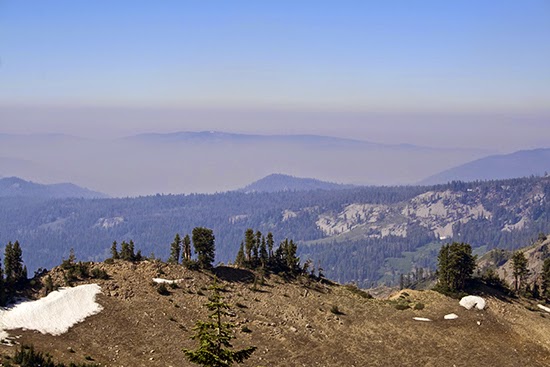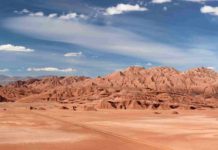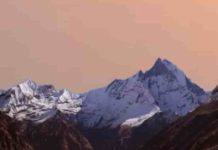
Untangling complex relationships requires understanding and facts. Applying both, Pacific Northwest National Laboratory led research finding the true culprits instigating layers of tiny atmospheric particles above California’s central valley. Contrary to previous assumptions, local recirculation patterns, affected by winds interacting with the unique topography of the Sierra Nevada Mountains, create these particle layers. Global model simulations had incorrectly tied the layers to a mix of long-range transport of pollution from Asia and local emissions of soot and particles from burning fossil fuels. This research improves understanding of how the particles impact the regional climate and policy makers’ decisions on how to regulate these emissions.
Atmospheric aerosols are tiny particles of soot and chemicals from combustion of fossil fuels and vapor from natural sources, such as trees and vegetation. Characterizing these particles and tracking them and their interactions in the atmosphere is a major challenge for air quality and climate models. Errors in aerosol predictions are a result of two sources of uncertainties: the emission rates from human-caused and natural sources; and simulations of the specific atmospheric processes that affect the lifecycle of these particles in models. Using direct observations and unique modeling tools, researchers can tackle both these challenges that affect projections of future heating and cooling of the Earth’s atmosphere.
Researchers from PNNL and their collaborators collected extensive meteorological, chemical, and aerosol measurement data at ground sites and aloft by research aircraft over a two-month period during two field investigations. The data from these campaigns were coupled with regional model simulations. This study integrated operational monitoring data and the wide range of meteorological, chemistry, and aerosol data collected between May and June of 2010 during the Carbonaceous Aerosol and Radiative Effects Study (CARES) and California Nexus of Air Quality and Climate Experiment (CalNex) field campaigns into a single publicly available data set as part of an “aerosol testbed.” The testbed was used to comprehensively evaluate the performance of one regional aerosol model, the Weather and Research Forecasting model coupled with chemistry (WRF-Chem), and understand how local and distant aerosol sources affect aerosol concentrations over California.
Their findings show that in global model simulations, the long-range transport of aerosols from Asia was overestimated, and anthropogenic emission rates of black carbon and other aerosol precursors over California were too high. Both of these factors can lead to erroneous estimates of how aerosols impact regional climate and decisions on how to regulate particulate emissions. The regional model also showed that observed aerosol layers above the central valley were not due to long-ranged transport as expected, but to local recirculation patterns associated with the interaction of the winds and topography of the Sierra Nevada that cannot be resolved by current climate models.
The unprecedented amount and type of measurements provided a unique dataset for modelers to test, evaluate, and improve the treatment of aerosol processes in regional and global models.
The CARES/CalNex testbed is being used to test and improve simulations of secondary organic aerosol formed by the atmospheric mixing of human-caused and natural-sourced trace gases. Scientists will also use the testbed to evaluate how the newly formed particles affect the size distribution measurement of all particles.
Reference:
Fast JD, J Allan, R Bahreini, J Craven, L Emmons, R Ferrare, PL Hayes, A Hodzic, J Holloway, C Hostetler, JL Jimenez, H Jonsson, S Liu, Y Liu, A Metcalf, A Middlebrook, J Nowak, M Pekour, A Perring, I Pollack, L Russell, T Ryerson, A Sedlacek, J Seinfeld, A Setyan, J Shilling, M Shrivastava, S Springston, C Song, R Subramanian, JW Taylor, V Vinoj, C Warneke, Q Yang, RA Zaveri, and Q Zhang. 2014. “Modeling Regional Aerosol Variability over California and Its Sensitivity to Emissions and Long-Range Transport during the 2010 CalNex and CARES Campaigns.” Atmospheric Chemistry and Physics 14:10013-10060. DOI: 10.5194/acp-14-10013-2014.
Note : The above story is based on materials provided by Pacific Northwest National Laboratory










